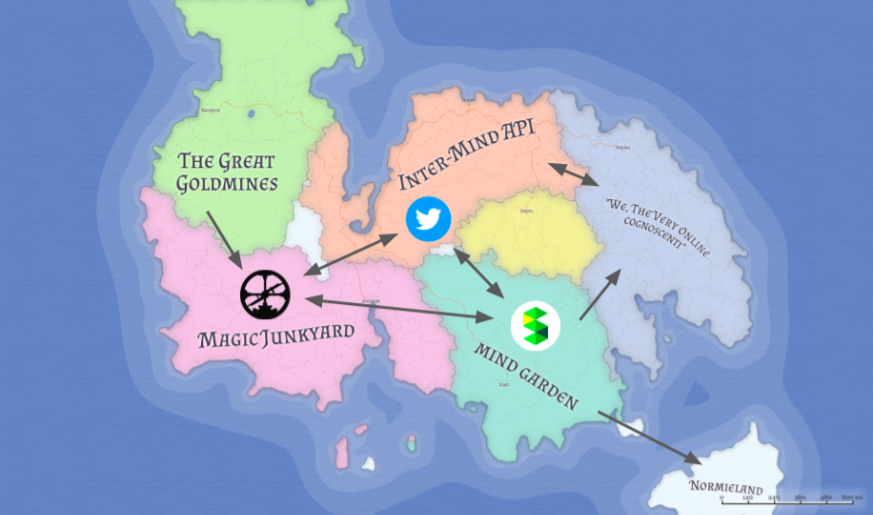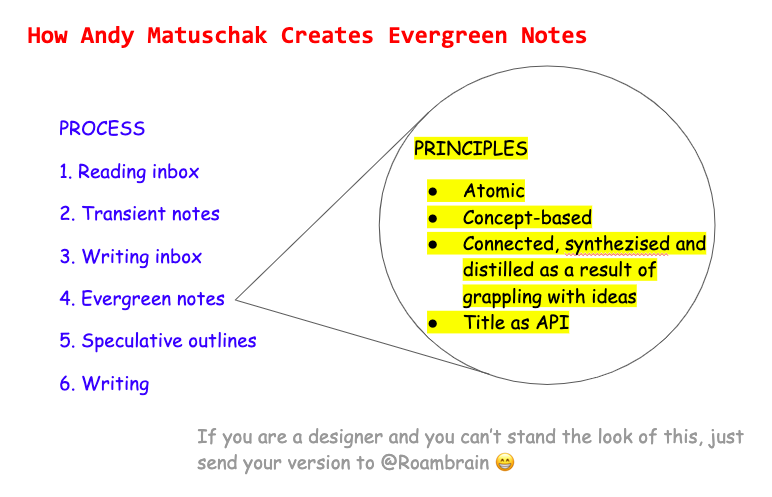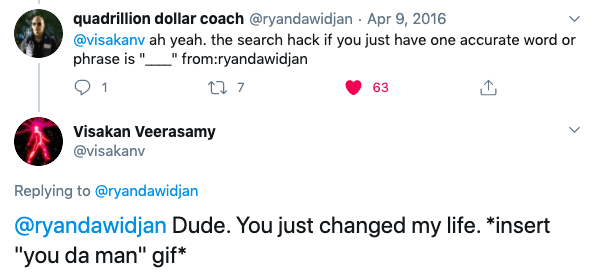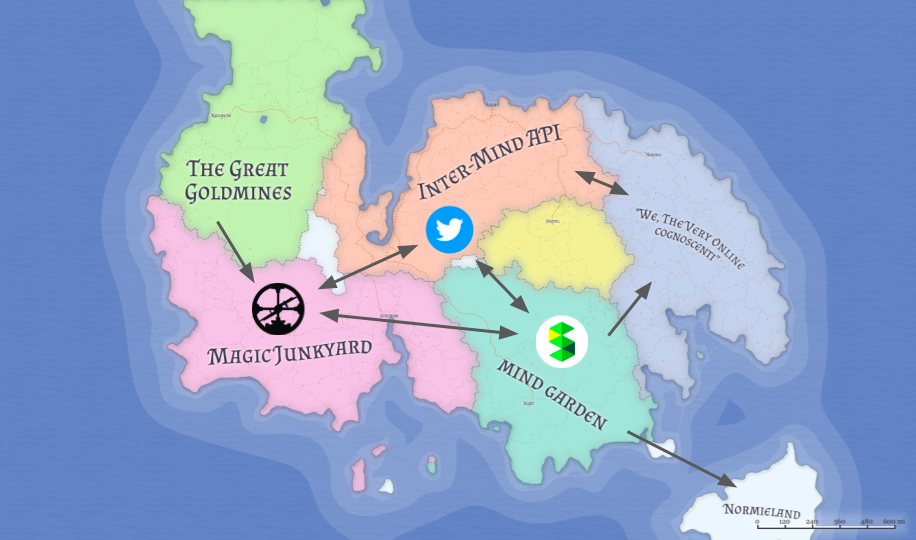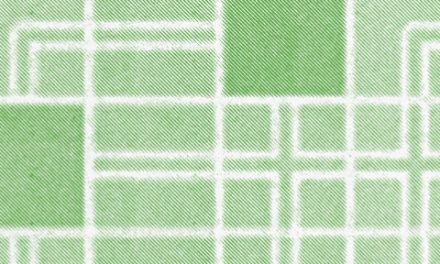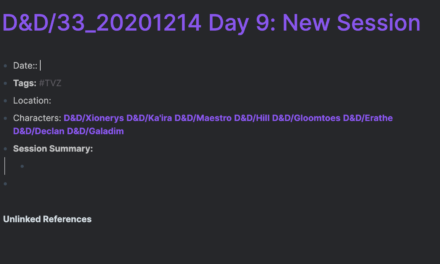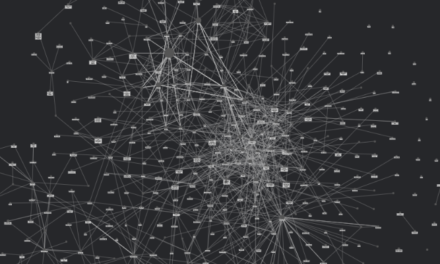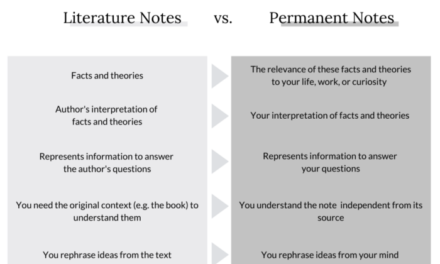Imagine being told about drawers but never seeing one. You’d be convinced that drawers would change how you keep your underwear forever. They sound simple so you attempt to make one. As you hammer away, you think: this would be a lot easier if I had an example.
This was how I felt when reading How to Take Smart Notes by Sönke Ahrens. I knew that the zettelkasten would transform how I write. As I built one, I kept on saying to myself: this would be a lot easier if I saw what a good zettelkasten actually looks like, particularly one designed for the age of software.
#roamcult at Twitter eventually led me — and apparently many of us — to Andy Matuschak’s Notes. It may have been Andy Matuschak’s destiny to build the first archetypal zettelkasten of the digital age. His work appears to be focused on creating software that assists in thinking. And he did not have to wait for the rise of Roam — he built his own tool for networked thought.
Not only does he demonstrate what a good zettelkasten looks like; he uses some of his public notes to explain his process and principles of making one. However, zettelkastens are designed to help their makers to create serendipity among ideas, not to explain those ideas.
If a note seems confusing or under-explained, it’s probably because I didn’t write it for you! Sorry — that’s sort of an essential tension of this experiment. — Andy Matuschak
This article is my attempt to stitch together Andy Matuschak’s notes on creating evergreen notes — the building blocks of a zettelkasten and the “fundamental unit of knowledge work.”
His style did not feel natural to me, so I also share what I did in Roam instead. Perhaps our difference in implementation will highlight universal principles.
1. The Reading Inbox
This is an optional step. If you encounter something interesting and you cannot read or watch it at the moment, you can send it to a reading inbox.
To avoid a proliferation of anxiety-inducing browser tabs and a terrifying folder of PDFs, it’s important to have an automatic procedure for capturing references to readings which might prove useful. — Andy Matuschak
The reading inbox is not a forever-expanding “someday, maybe” list. Draining out this temporary holding area is part of the routine. Draining means either:
- Deleting the note
- Serious reading of the material (ie, taking notes)
- Shallow reading of the material: transferring it to a list of references or
- Adding it to some other list (eg, recipes)
This sounds like Inbox Zero, which has never worked for me. What I do instead is to treat incoming content like a giant river. I hook interesting content either in Roam, raindrop.io or Twitter (with a retweet comment my future self could search). When I have time or the need arises, I check my hooks. I don’t obsess about it. In a world of abundance and searcheability, I prefer to spend time creating rather than organizing.
Visakan Veerasamy has created — and continues to create — a fascinating stream of interlinked tweets. It is a work of art. We see the history of his craft in the artwork itself. Here’s the precise moment he discovered an important part of his toolkit.
twitter.com/visakanv/status/718829479921987584
This also transformed how I use Twitter. It has become a tool to converse with my past and future selves.
2. Transient Notes
What Sönke Ahrens calls “Fleeting Notes” Andy Matuschak calls “Transient Notes.” Matuschak uses a pocket notebook. Pages with notes are ripped off for processing:
But as scratch thoughts look like they might have legs, they get extracted into a note in my writing inbox. — Andy Matuschak
I follow the practice outlined in How to Take Smart Notes. I write transient notes on the nearest piece of paper, post in Twitter or note in Google Keep. When reading deeply technical or profound content, I copy quotes in Roam and nest my questions and dirty notes under the quotes.
3. The Writing Inbox
The writing inbox is a collection of transient notes. During his zettelkasten session (the first two hours of his day), Matuschak selects notes that strike him. He then works on the basic unit of intellectual work: creating evergreen notes.
4. Evergreen Notes
Creating evergreen notes is the most important part of zettelkasten. This is where thinking happens. Here are its key principles:
- Evergreen notes should be atomic.
- Evergreen notes should be concept-based.
- Evergreen notes should be connected, synthesized and distilled as a result of grappling with ideas.
- Evergreen notes should have titles that function like APIs.
4.1. Evergreen notes should be atomic
It’s best to create notes which are only about one thing — but which, as much as possible, capture the entirety of that thing. — Andy Matuschak
4.2. Evergreen notes should be concept-based
It’s best to factor Evergreen notes by concept (rather than by author, book, event, project, topic, etc). This way, you discover connections across books and domains as you update and link to the note over time. — Andy Matuschak
4.3. Evergreen notes should be distilled, connected and synthesized as a result of grappling with ideas
Understanding requires effortful engagement. — Andy Matuschak
Grappling with ideas means:
- Distillation. When reading content, I only copy-paste the sections that resonate with me. Sometimes this is intuitive. Sometimes, I have specific answers I’m looking for.
- Connecting notes forces us to “think expansively about what other concepts might be related to what we’re thinking about. It creates pressure to think carefully about how ideas relate to each other.” In Roam, I use queries, search, and autocomplete using [[]] or (()).
- Synthesizing. Early on, I noticed my best-written notes are from podcasts. Since I don’t have a way of easily copy-pasting, I need to create a new note with my own words. The ideas are forced to pass through my short term memory. I replicate this constraint with text in Roam by creating Twitter threads.
Questions are my main tools for grappling with ideas. Here’s an example of a question to engage with advice: “Are they simply sharing their winning lottery ticket numbers?”. This question is inspired by this quote:
Avoid people who got rich quickly. They’re just giving you their winning lottery ticket numbers. — Naval Ravikant
For technical papers, I notice my questions are mostly:
- What: a word or phrase I don’t understand. I seek the answers through Google or Twitter. God, I miss Quora!
- Why: a claim or a conclusion. The answers are usually within the paper or in the references.
I’m still early in building an arsenal of questions to interrogate ideas.
4.4. Evergreen notes should have titles that function like APIs
A key part in engagement with an idea is to name it. Andy Matuschak suggests that they should be declarative or imperative, have sharp claims and could act like APIs between ideas.
5. Speculative outlines
When I started my zettelkasten, I used block references to collect sentences under as many outlines I could think of. So far none of them have transformed to published pieces.
Now, I create threads in Twitter. This has been more effective. For instance, this tread and this tread about genomic pathogen surveillance eventually became a project, a microgrant proposal and a letter of intent sent to the science and technology agency of my country. The constraints of threads help you distill, connect and synthesize.
This article you are now reading came from a Twitter thread. I’m transmuting it into an article because of the good feedback it got. Threads are MVPs for long-form writing and projects.
twitter.com/Mappletons/status/1255977593880416257
Social media is a billion dollar industry because they exploit our desires for connection and validation. Instead of fighting or denying its effect on our primate brains, why not use them to propel ourselves to goals that we choose with our prefrontal cortices?
Most importantly, the responses and conversations that flow from Twitter threads lets new ideas bloom.
6. Writing
Normally, we start an outline when we start a writing project. This forces us to start with a blank page. By contrast, if we write new notes every day and notice how they relate to each other, these can accumulate into potential writing projects. — Andy Matuschak
Even though my process is quite different from that of Matuschak or Ahrens, the promise of the zettelkasten still held true:
If you’ve already written lots of concept-oriented Evergreen notes around the topic, your task is more like editing than composition. — Andy Matuschak
Except for a few parts, writing this article was mostly assembling ideas from threads. It was the same experience with my little genomics project.
Grappling further with these ideas
I have a few questions:
- The zettelkasten was designed for material space. Are there constraints from that design that we continue to unconsciously carry as we build zettelkastens in software?
- Do different minds have different information architectures? If this is true, are there zettelkasten styles that are best for each architecture? Are there frameworks that describe these architectures?
- Will objectives vary how we design our zettelkastens (eg, to write better vs to create works of art vs to produce novel, powerful ideas)?
To wrestle with these questions, I’m drafting the fifth instalment of the Roam-fu series: “1/ Roam-fu V: THE EMPIRE OF THREE KINGDOMS.”
In the meantime, let’s talk about it at Twitter!

